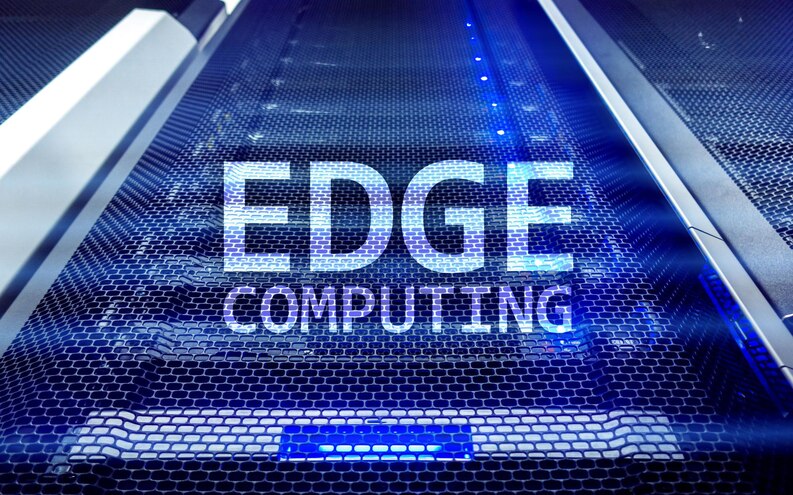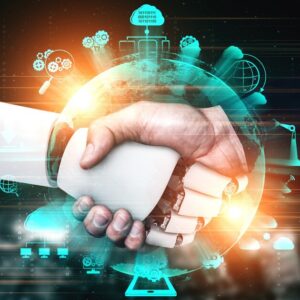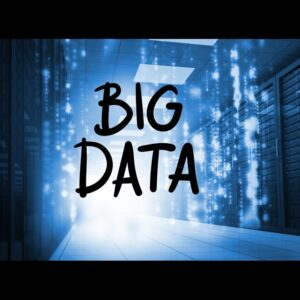Edge Computing has become a buzzword in the tech world, and for a good reason. It’s a concept that promises to revolutionize the way we interact with technology, making it faster, more efficient, and more secure.
In this article, we’ll delve into what edge computing is, its significance in our daily lives, its advantages, challenges, and real-world applications. We’ll also explore how edge computing intertwines with emerging technologies and its impact on American and world industries. Let’s embark on this journey into the world of edge computing.

What is Edge Computing?
Simply, edge computing is a type of a distributed computing paradigm that brings data processing closer to the source of data. In contrast to traditional cloud computing, which centralizes data processing in remote data centers, edge computing places it on the “edge” of the network, nearer to the devices and sensors producing the data. This proximity results in reduced latency and faster real-time decision-making.
The Importance of Edge Computing
Edge computing has gained prominence due to the growing demand for low-latency applications. Whether it’s autonomous vehicles making split-second decisions or smart homes responding to voice commands instantly, edge computing plays a crucial role in ensuring that data processing occurs rapidly.
How Edge Computing Differs from Cloud Computing
While cloud computing relies on centralized data centers, edge computing moves data processing to the periphery of the network. This shift minimizes the need to transmit vast amounts of data over long distances, reducing latency and bandwidth usage.
Edge Computing in Daily Life
Smart Homes
In our connected homes, edge computing enables devices like smart thermostats and voice assistants to respond quickly to our commands. It ensures that your lights turn on when you ask, rather than waiting for a command to travel to a distant server and back.
Autonomous Vehicles
Edge computing is the brain behind autonomous vehicles. It processes data from sensors and cameras in real-time, allowing vehicles to make instant decisions to ensure safety on the road.
Healthcare
In healthcare, edge computing plays an important role in remote patient monitoring. It allows doctors to receive real-time data from wearable devices, making it easier to track patients’ health.
Retail
Edge computing enhances the shopping experience. It enables stores to offer personalized discounts or product recommendations to shoppers in real-time.
Advantages of Edge Computing
Reduced Latency
Edge computing drastically reduces latency, making it ideal for applications where time is critical. This is a game-changer for gaming, video conferencing, and more.
Enhanced Privacy and Security
Data remains closer to the source, reducing the risk of security breaches. Edge computing provides a level of privacy and security that’s essential in our connected world.
Bandwidth Efficiency
By processing data locally, edge computing reduces the burden on network bandwidth, making it a more efficient choice for data-intensive applications.
Improved Reliability
Edge devices can continue to operate even when disconnected from the cloud, ensuring uninterrupted service, which is especially important in critical applications.
Challenges of Edge Computing
Scalability
Scalability can be a challenge in edge computing, as managing a vast number of edge devices can be complex.
Management Complexities
Dealing with distributed devices and ensuring their seamless operation requires sophisticated management solutions.
Data Synchronization
Ensuring that data is synchronized across edge devices can be challenging, especially when dealing with real-time applications.
Edge Computing Technologies
Fog Computing
Fog computing is an extension of edge computing that extends the cloud’s capabilities to the edge of the network, enabling more complex data processing.
Mobile Edge Computing (MEC)
MEC brings computation and data storage closer to the cellular tower, reducing latency in mobile networks.
Edge Devices
Edge devices, like smartphones and IoT sensors, are the key players in edge computing, serving as the source and processing units for data.
Edge Computing Real-World Applications
Internet of Things (IoT)
IoT devices generate massive amounts of data, and edge computing helps process and analyze this data locally, reducing latency and enabling rapid decision-making.
Video Streaming
Edge computing is transforming video streaming, ensuring smoother playback and reducing buffering.
Augmented Reality (AR)
AR applications rely on real-time data processing, and edge computing is essential to provide a seamless AR experience.
Industrial Automation
In industrial settings, edge computing is used for predictive maintenance, reducing downtime and optimizing operations.
Edge Computing in New Technologies
5G Networks
The rollout of 5G networks aligns perfectly with edge computing, as it complements the need for low latency and high-speed data processing.
Artificial Intelligence
Edge computing and AI go hand in hand. AI models can run on edge devices, enabling smart decision-making without the need for a constant internet connection.
Blockchain
Blockchain technology can benefit from edge computing by ensuring faster transaction validation.
Edge Computing and American/World Industry
Manufacturing
In the manufacturing sector, edge computing is transforming production lines, making them more efficient and reducing downtime.
Agriculture
Farmers are using edge computing for precision agriculture, optimizing crop management, and improving yields.
Energy
In the energy sector, edge computing is used for real-time monitoring of power grids, ensuring a stable energy supply.
Future of Edge Computing
Evolving Trends
Edge computing is evolving rapidly, with more advanced edge devices and improved software solutions.
Potential Innovations
The future holds exciting innovations, such as edge AI, which will further enhance the capabilities of edge computing.
Integration with AI
The synergy between edge computing and AI will continue to shape the tech landscape, delivering smarter and more efficient applications.
Conclusion,
Edge computing is at the forefront of technological advancements, changing the way we interact with the digital world. Its significance in daily life, advantages, and applications are evident. Moreover, it’s deeply integrated into new technologies and is revolutionizing American industries. As edge computing evolves, we can expect even more exciting developments on the horizon.
Hope you have got something new after reading this article. To be aware of more new technology trends keep reading the articles of The Great Info. Have a good day!





